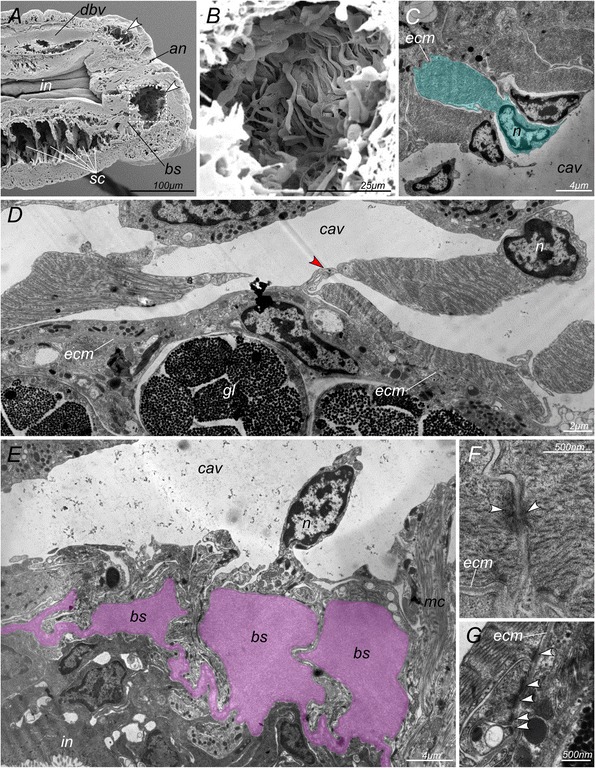Figure 5.

Ultrastructure of P. dumerilii pygidial cavity inlay. A: Scanning electron micrograph of sagittal dissection of posterior part of the worm showing pygidial cavity (arrowheads) and segmental coeloms (sc). B: Closer view of the ventral part of the pygidial cavity (rectangle selection in A) showing inlay cells. C-G: Transmission electron micrographs of different parts of the pygidial cavity inlay. C-D: Different kinds of myoepithelial cells, red arrowhead marks thin cytoplasmic lamella connecting two parts of the cell; E: visceral myoepithelium and blood vessels; F: Adherens junctions between myoepithelial cells (arrowheads). G: Hemidesmosomes, attaching myoepithelial cells to the basal membrane (arrowheads). an – anus; bs – perianal blood sinus; cav – pygidial cavity; dbv – dorsal blood vessel; ecm – extracellular membrane; gl – pygidial glands; in – intestine; n – cell nucleus; sc – segmental coeloms.
